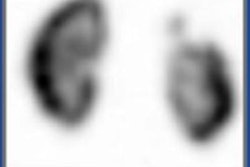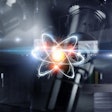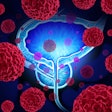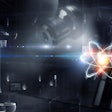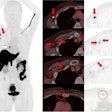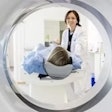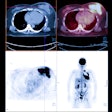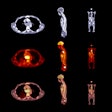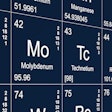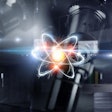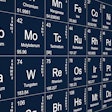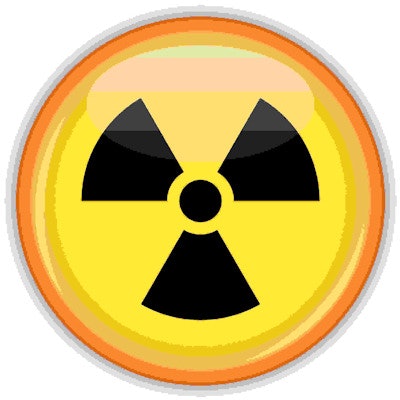
Reducing radiation exposure from myocardial perfusion imaging (MPI) is a key priority, especially for congenital heart disease (CHD) patients who face repetitive scanning. Which nuclear imaging modality and radiotracer are best for this task is the subject of a study published August 12 in the Journal of Nuclear Cardiology.
Researchers from Brigham and Women's Hospital in Boston and Boston Children's Hospital paired technetium-99m (Tc-99m) sestamibi SPECT and SPECT/CT against rubidium-82 (Rb-82) and N-13 ammonia with PET and found that radiation dose was lowest with N-13 ammonia PET. That finding certainly is helpful in directing MPI strategies, bit it might not always be the best option. Nuclear medicine practitioners still must balance radiation risk against an exam's optimal clinical benefit for the patient, the researchers noted.
"The key is to make sure that the clinical question is clear and to understand in discussion with the congenital heart disease physician that the answers given by the test are likely to change a patient's management," said study co-author Dr. Sharmila Dorbala, from the division of nuclear medicine and molecular imaging at Brigham and Women's Hospital. "The risk-benefit ratio should always be considered. The future small potential risk of radiation-related side effects should be weighed against a present life-changing clinical benefit from treatment if heart problems are found on these scans."
Radiation versus outcome
Patients with complex congenital heart disease could undergo one of several stress imaging modalities, including echocardiography, cardiac MRI, and radionuclide scans. The latter approach can be performed with an exercise stress test and is often preferred over cardiac MRI, which requires a pharmacological stress test, and echocardiography, which has shortcomings in spatial resolution and image quality, particularly in hearts with complex anatomy.
At the same time, radiation exposure remains an "overarching concern" with radionuclide MPI, particularly among pediatric patients with complex congenital heart disease who are likely to undergo multiple imaging scans to monitor their progress after surgery and any subsequent treatment, the study authors noted (J Nucl Cardiol, August 12, 2019).
"Because treatments have improved over the past several decades, patients with complex congenital heart disease are now living longer, growing up to become adults, and these adults need close monitoring," Dorbala told AuntMinnie.com. "Most of them have undergone surgical repair procedure as neonates or in their infancy. They need long-term surveillance for possible complications and treatments for their heart conditions."
A number of pediatric patients also undergo coronary angiography or other imaging procedures, so their lifetime exposure to imaging-related radiation may sometimes be high. For this reason, Dorbala and colleagues wanted to explore different methods and improve their techniques so they could accurately evaluate for ischemia related to coronary artery pathology with the lowest possible radiation dose.
To that end, they looked at 75 consecutive subjects with complex congenital heart disease at Boston Children's Hospital and Brigham and Women's Hospital between 2006 and 2013. The patients had a median age of 18.6 years (range, 5-76 years) at the time of their physician-referred MPI scans, which included one-day rest/stress imaging with SPECT (64 patients, 85%) or PET (11 patients, 15%).
The most common type of CHD was transposition of the great arteries in 47 patients (63%), with 41 of those patients (87%) having had an arterial switch repair with coronary artery reimplantation.
Proper dosage
Adult patients underwent SPECT studies with 4.5-12 mCi of Tc-99m sestamibi for rest and 15-34 mCi of Tc-99m sestamibi for stress using weight-based dosing. Images were acquired 15 to 45 minutes after injection of the radiotracer with a two-headed SPECT gamma camera (e.cam, Siemens Healthineers), SPECT/CT gamma camera (Symbia T6, Siemens), or a cadmium zinc telluride (CZT) scanner (D-SPECT, Spectrum Dynamics).
Pediatric patients received 0.150 mCi/kg of Tc-99m sestamibi for their arrest study and 0.350 mCi/kg of Tc-99m sestamibi for their stress test. Images also were acquired 15 to 45 minutes after exercise on a two-headed SPECT gamma camera (e.cam, Siemens). In addition, Rb-82 or N-13 ammonia PET/CT scans (Discovery LS, GE Healthcare, or Biograph PET/CT, Siemens) were acquired using standard protocols. Rb-82 PET was performed at rest and following pharmacological stress with 46.1 (± 9.3) mCi and 46.1 (± 9.3) mCi of Rb-82, respectively. PET was performed at rest with 7.3 (± 3.6) mCi of N-13 ammonia and 8.6 (± 2.5) mCi of N-13 ammonia for the exercise stress test.
Effective radiation dose was estimated for stress/rest MPI and predicted for one-day stress-first scans and two-day stress/rest MPI in cases of abnormal results with the exercise stress test. As it turned out, 42 patients (56%) had normal rest/test results compared with 32 patients (43%) with abnormal findings. One study was indeterminate.
Effective radiation doses
The mean effective radiation dose for all subjects was 8.1 (± 2.8) mSv, with significantly higher mean numbers among adult patients (9.1 ± 2.5 mSv), compared with pediatric patients younger than age 16 (6.2 ± 2.4 mSv; p < 0.0001). The lowest mean effective radiation dose was seen with N-13 ammonia PET, which was significantly lower than Tc-99m sestamibi sodium ioidide (NaI) SPECT/CT (p < 0.0001).
| Mean effective radiation doses for rest/stress MPI | |||||
| PET | Tc-99m sestamibi | ||||
| N-13 ammonia | Rb-82 | CZT SPECT | NaI SPECT | NaI SPECT/CT | |
| Radiation dose (mSv) | 2.1 ± 0.6 | 6.1 ± 1.2 | 6.3 ± 0.2 | 8.7 ± 2.3 | 12.5 ± 0.9 |
Interestingly, the researchers also noted that the mean effective radiation dose for rest and stress MPI dropped significantly after 2010, when of CZT SPECT and PET became more commonplace in clinical practice. The mean effective radiation dose among 45 subjects imaged before 2010 was 10.6 (± 3.1) mSv), compared with 8.4 (± 3.0) mSv for the 30 patients who underwent CZT SPECT and/or PET after 2010.
During the study, these technologies were also used fairly well to meet the effective radiation dose standard of 9 mSv or less, as recommended by the American Society of Nuclear Cardiology, with 45 subjects (61%) below that level for their rest and stress MPI scans.
Tracers' advantage
In performing MPI studies, the clinical advantage of the three tracers is that all of them can image blood flow to the heart muscle, with Tc-99m and N-13 ammonia used for exercise stress testing, which is the preferred initial step in evaluating patients with complex congenital heart disease. There is, however, one slight drawback in that Rb-82 and N-13 ammonia are not always readily available to physicians.
"If you have access to a PET scanner and access to ammonia, you have an advantage in performing very low radiation dose PET scans in these patients," Dorbala said. "On the other hand, very few imaging centers have access to ammonia, and these patients may have to be referred to centers with PET scanning if needed."
Another low radiation dose option that is widely available, she added, is to use a two-day MPI approach with Tc-99m SPECT. The exercise stress test would be performed on the first day as usual, and, if the results are abnormal, the patient would return for the additional rest test the following day. This strategy also minimizes radiation exposure, especially when combined with CZT detector scanners or software for low count density image construction.
"Since we have access to both technologies, we try for the most part to use ammonia-PET with exercise testing, along with weight-based dosing, to perform very low radiation dose imaging," she added. "For any reason we have to use Tc-99m myocardial perfusion SPECT imaging, we use weight-based dosing and will typically perform that as a two-day study if a rest test is needed. The key point is that each request is carefully evaluated to ensure that the test is likely to provide answers that are likely to change the patient's management."






